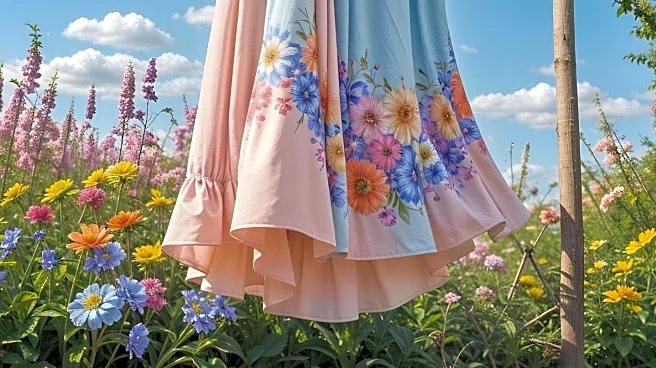What's Happening?
The National Theatre in London has transformed its rooftop into a vibrant garden dedicated to growing natural dye plants. This initiative aims to replace synthetic chemical dyes, which are harmful to both the environment and human health, with natural alternatives. The garden features a variety of plants such as indigo, dahlias, hollyhocks, camomile, and wild fennel, which are used to create vivid colors for the theatre's costumes. Liz Honeybone, the head textile artist, is leading the effort to incorporate these natural dyes into all productions, starting with 'Playboy of the Western World.' The garden not only serves as a source of dyes but also provides a peaceful retreat for actors and a habitat for local wildlife.
Why It's Important?
The shift towards using natural dyes at the National Theatre represents a significant move towards sustainability in the arts. By reducing reliance on synthetic dyes, the theatre is minimizing its environmental footprint and promoting healthier practices for costume production. This initiative could inspire other cultural institutions to adopt similar eco-friendly methods, potentially leading to broader changes in the industry. The use of natural dyes also supports biodiversity, as the garden attracts pollinators and other wildlife, enhancing the ecological value of urban spaces.
What's Next?
The National Theatre plans to continue expanding its use of natural dyes in future productions, with the goal of eventually producing all costumes using these methods. This could lead to collaborations with other theatres and arts organizations interested in sustainable practices. Additionally, the success of the dye garden may encourage further investment in urban agriculture and green spaces, contributing to environmental conservation efforts in cities.
Beyond the Headlines
The initiative highlights the intersection of art and environmentalism, showcasing how creative industries can contribute to sustainability. It also raises awareness about the health risks associated with synthetic dyes, potentially influencing consumer choices and industry standards. The garden's role as a refuge for both people and wildlife underscores the importance of integrating nature into urban environments, offering a model for other institutions to follow.













